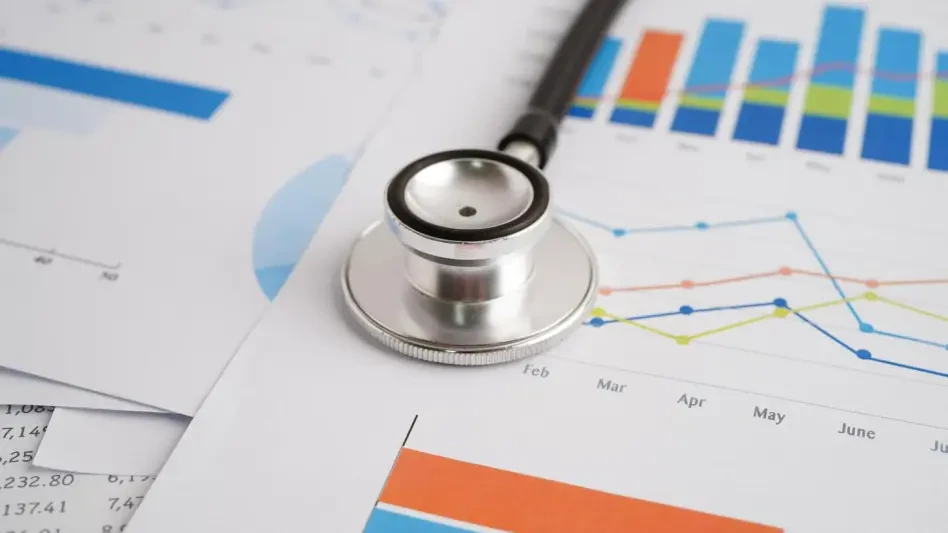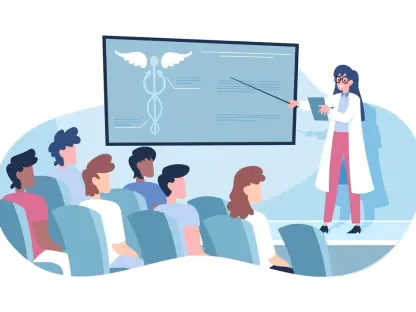Imagine a healthcare system where every decision, from patient treatment plans to hospital staffing, is informed by real-time, accurate insights, drastically reducing costs and saving lives. In an industry burdened by clinician burnout, staffing shortages, and escalating expenses, data analytics emerges as a transformative force, promising to bridge gaps in care delivery and operational efficiency. This review dives deep into the realm of healthcare data analytics, exploring its core components, emerging trends, real-world impact, and the challenges that stand in the way of its full potential. By examining this technology, a clearer picture forms of how it can reshape healthcare into a more connected, proactive, and sustainable model.
Core Components of Healthcare Data Analytics
Data Quality and Integration
At the heart of effective healthcare analytics lies the critical need for high-quality, integrated data. Fragmented sources, such as electronic health records (EHRs), insurance claims, and lab results, often create silos that obstruct a comprehensive view of patient health or systemic trends. Without clean, reliable data, even the most sophisticated tools struggle to deliver meaningful insights, leading to missed opportunities in care and resource management.
The process of integration tackles these barriers by unifying disparate datasets into a cohesive framework. When done correctly, it enables clinicians to access a holistic patient profile, supporting better decision-making at the point of care. Moreover, integrated data lays the groundwork for broader initiatives, such as population health management, ensuring that healthcare organizations can identify patterns and allocate resources more effectively.
Success in this area hinges on robust data governance practices, including standardization and error reduction. As systems evolve to prioritize interoperability, the ability to merge diverse inputs without losing accuracy becomes paramount. This foundation not only drives clinical outcomes but also empowers operational strategies that can adapt to dynamic industry demands.
Predictive Modeling and Risk Detection
Another cornerstone of healthcare analytics is predictive modeling, a powerful tool that anticipates patient risks before they escalate into crises. By analyzing historical and real-time data, these models identify patterns that signal potential issues, such as the likelihood of hospital readmissions or the onset of chronic conditions. This capability shifts care from reactive to proactive, a game-changer in managing patient health.
The technical underpinnings of predictive modeling often involve machine learning algorithms that refine their accuracy over time. These tools can process vast datasets to detect subtle correlations that human analysis might overlook, offering early warnings that enable timely interventions. For instance, identifying high-risk patients allows care teams to prioritize outreach or adjust treatment plans, ultimately reducing preventable emergencies.
Beyond individual care, risk detection through analytics supports systemic improvements by highlighting areas of concern across entire populations. Healthcare providers and payers can use these insights to design targeted programs, ensuring resources are directed where they are most needed. This dual impact on personal and collective health outcomes underscores why predictive tools are indispensable in modern healthcare.
Emerging Trends in Healthcare Analytics
The landscape of healthcare analytics is rapidly evolving, with several trends shaping its scalability and adoption across the industry. One prominent issue is the tendency for analytics initiatives to outpace underlying data infrastructure. Many organizations rush to implement advanced tools without first establishing a solid foundation, resulting in unreliable insights due to inconsistent data systems or lack of interoperability.
Another critical trend centers on cultural barriers that hinder technology adoption. Resistance to change, often fueled by skepticism about replacing human judgment with automated insights, remains a significant obstacle. Building a data-driven mindset requires engaging stakeholders early, aligning tools with existing workflows, and demonstrating tangible benefits to foster trust and acceptance among healthcare teams.
Lastly, the risk of scaling without a clear strategy poses a threat to long-term success. While starting with small, focused projects can yield early wins, expanding efforts without prioritization can dilute impact as competing goals emerge. Maintaining strategic clarity ensures that analytics programs remain aligned with core objectives, such as cost reduction and improved patient outcomes, maximizing their transformative potential.
Real-World Applications of Healthcare Analytics
Healthcare analytics has proven its value through practical applications that address pressing challenges in care delivery. One notable example is its role in reducing emergency department visits by identifying at-risk patients early. Through predictive insights, providers can intervene with preventive measures, steering individuals toward appropriate care settings and easing the strain on overburdened facilities.
Another impactful use case is the reduction of hospital readmissions, a persistent issue tied to both patient outcomes and financial penalties. Analytics tools analyze discharge data and follow-up patterns to flag individuals who might need additional support, enabling tailored care plans that prevent unnecessary returns. This not only improves health metrics but also enhances operational efficiency by optimizing bed utilization.
Beyond clinical settings, analytics transforms resource allocation through population health insights. By mapping community health trends, organizations can better distribute staff, equipment, and funding to match demand, cutting waste and improving access. Unique applications, such as crafting personalized care plans for chronic conditions like diabetes, further illustrate the versatility of these tools in addressing diverse healthcare needs.
Challenges and Limitations in Adoption
Despite its promise, healthcare data analytics faces significant hurdles that slow widespread adoption. Technical challenges, particularly fragmented data systems, remain a primary barrier, as incompatible platforms and inconsistent standards prevent seamless information sharing. This fragmentation often leads to incomplete or delayed insights, undermining the effectiveness of analytics programs.
Cultural resistance also poses a substantial challenge, with many healthcare professionals wary of over-reliance on technology. Concerns about data privacy, coupled with fears that automated systems might overshadow clinical expertise, create reluctance to fully embrace these tools. Overcoming this requires not just training but also a shift in mindset, emphasizing that analytics enhances rather than replaces human decision-making.
Strategic missteps in scaling efforts add another layer of difficulty, as poorly planned expansions can strain resources and dilute focus. Regulatory constraints and market dynamics further complicate adoption, often imposing strict compliance demands or creating competitive pressures. Ongoing efforts to improve interoperability, build trust among stakeholders, and refine implementation approaches are crucial to navigating these obstacles.
Future Outlook for Healthcare Analytics
Looking ahead, the trajectory of healthcare data analytics points toward groundbreaking advancements that could redefine the industry. Improvements in data infrastructure, particularly through enhanced interoperability standards, are expected to resolve many current limitations, enabling seamless integration across platforms. Such progress will likely unlock deeper, more reliable insights for both clinical and operational purposes.
Advancements in predictive tools also hold immense promise, with emerging technologies poised to refine risk detection and personalization of care. As algorithms become more sophisticated, their ability to anticipate complex health scenarios will grow, supporting a truly proactive model that prevents issues before they arise. This could fundamentally alter how healthcare systems prioritize and deliver services.
Over the long term, the vision of a connected, personalized care model driven by analytics appears increasingly attainable. This shift has the potential to not only elevate patient outcomes but also create a more sustainable healthcare ecosystem by aligning resources with real-time needs. As these developments unfold, the industry stands on the cusp of a data-driven transformation with far-reaching implications.
Final Reflections
Reflecting on this exploration, healthcare data analytics stands as a beacon of innovation, delivering measurable benefits in risk detection, operational efficiency, and patient care throughout its implementation phases. Its ability to reduce emergency visits and optimize resources marks a significant stride toward addressing systemic challenges. Yet, barriers like fragmented systems and cultural hesitancy slow its broader impact at times. Moving forward, stakeholders must prioritize investments in robust data foundations and interoperability to unlock greater potential. Engaging teams through education and demonstrated value will be key to dismantling resistance. Ultimately, a strategic focus on scalable, impactful initiatives will ensure that this technology continues to evolve, paving the way for a more responsive and personalized healthcare landscape.









